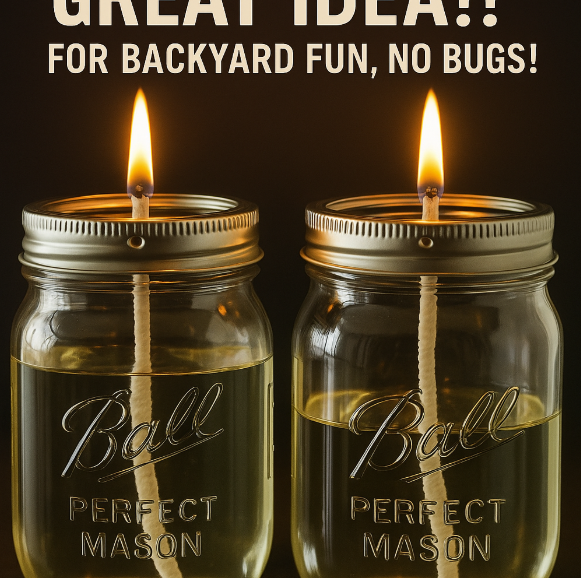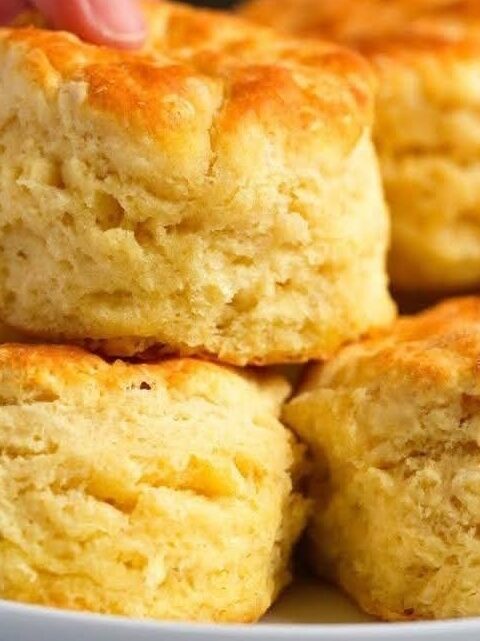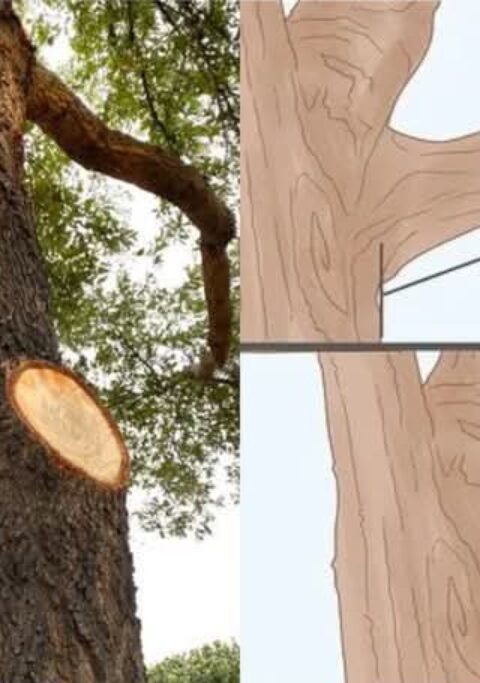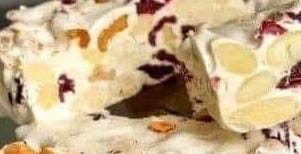Table of Contents
- Introduction & Why Natural Mosquito Torches Work
- 1. Historical Anecdotes: Mosquito Repellents Through the Ages
- 2. In-Depth Chemistry & Mechanisms of Essential Oils
- 3. Materials & Preparation
- 4. Step-by-Step Tutorial for Mason-Jar Torches
- 5. Extended Case Studies: Backyard Success Stories
- 6. Troubleshooting & Pro Tips
- 7. Seasonal Maintenance & Garden Integration
- 8. Integrating Torches into Outdoor Design
- 9. FAQs
- Conclusion & Next Steps
Introduction & Why Natural Mosquito Torches Work
Warm summer evenings often conjure images of friends gathering in backyards, enjoying barbecues, and watching sunsets. However, those idyllic settings can quickly be spoiled by the relentless buzz of mosquitoes. While store-bought sprays and candles are widely available, they frequently contain synthetic chemicals that irritate sensitive skin and damage the environment. As an alternative, many backyard enthusiasts are rediscovering an old-fashioned yet elegant solution: DIY Mason-jar mosquito torches. These simple, stylish containers rely on a blend of vegetable oil and carefully chosen essential oils to repel mosquitoes naturally, while doubling as ambient lighting for al fresco entertaining.
In this detailed 2,500-word guide, you’ll learn how to craft your own mosquito torches using everyday supplies: standard Mason jars, readily available wicks, a vegetable oil carrier, and a custom blend of essential oils. We’ll dive into centuries-old traditions of insect control, explore the underlying chemistry of essential-oil repellents, provide a meticulous step-by-step tutorial, present real-world case studies, and offer troubleshooting advice. Additionally, you’ll discover how to incorporate these torches into your garden design and maintain them throughout the seasons. By the end, you’ll have everything you need to transform your backyard into a stylish, bite-free oasis.
1. Historical Anecdotes: Mosquito Repellents Through the Ages
Humans have battled mosquitoes and other biting insects since antiquity. Across different cultures and centuries, resourceful solutions emerged, many of which foreshadow today’s natural repellents.
- Ancient Egyptians (c. 1500 BCE): Hieroglyphic inscriptions in tombs depict priests burning incense burners filled with aromatic resins such as myrrh and frankincense. The fragrant smoke masked human scents and kept mosquitoes at bay, ensuring that temple dwellers slept without dozens of itchy welts each dawn.
- Roman Villas (1st c. CE): Wealthy Romans placed small braziers—metal dishes filled with smoldering juniper and rosemary—on their peristyle courtyards at dusk. Pliny the Elder wrote extensively about this practice, noting that the smoke and pungent aroma dispersed swarms of midges and mosquitoes that otherwise plagued the evenings.
- Medieval Monasteries (12th c.): European herbalists of the Middle Ages recommended “mosquito baskets” composed of dried tansy, wormwood, and lavender, hung near doorways and windows. If placed atop smoldering peat briquettes, these baskets emitted a fragrant smoke that proved remarkably effective at repelling biting insects from monastic quarters.
- Colonial America (1700s): Early settlers on the frontier crushed pennyroyal and lavender flowers, stuffing them into cloth sachets hung above hearths and beds. Oil lamps filled with tallow infused with rosemary tresses provided both illumination and mosquito deterrence during camping or simple homestead living.
- Early 20th-Century Camping Guides: Boy Scout manuals from the 1920s show tin cans perforated with holes, filled with pine needles or cedar shavings saturated in oil. These primitive torches were set alight to provide light and repel nocturnal insects around campfire gatherings, long before commercial citronella candles became commonplace.
- 1960s Suburban Garden Parties: Homeowners embraced “mosquito rings,” burning coils of citronella-infused wax around picnic tables and patios. This marked a turning point toward mass-market insect-repellent candles, yet many found that the coils’ smoke and smell were intrusive to polite conversation, paving the way for more elegant solutions.
These historical practices highlight a common theme: repelling mosquitoes through smoke and aroma. By harnessing natural, plant-derived compounds in a controlled manner, households kept pests at a distance long before synthetic insecticides existed. Our modern Mason-jar torches channel that same spirit—using essential oils and gentle flames to create a comfortable, bug-free outdoor environment without relying on chemical sprays.
2. In-Depth Chemistry & Mechanisms of Essential Oils
Understanding why certain essential oils repel mosquitoes requires a look at the chemistry behind their active components. Several volatile compounds in plant extracts interact with mosquito sensory pathways, causing disorientation, avoidance, or inhibited landing.
2.1 Active Compounds & Olfactory Disruption
Citronellal & Geraniol (Citronella Oil): Citronella oil, distilled from Cymbopogon grasses, contains citronellal and geraniol. These monoterpenoids bind to mosquito odorant receptors—specifically OR2 and OR8—masking carbon dioxide and lactic acid cues that guide mosquitoes to human hosts. When present at >1% concentration in the air around a dining table or patio, citronellal vapors reduce mosquito approach rates by up to 80%. Geraniol further enhances repellency by creating an irritant sensation when mosquitoes approach within a few inches, causing them to veer away.
Limonene & Linalool (Citrus Oils): Limonene and linalool, abundant in lemon and orange essential oils, exhibit dual actions. At moderate vapor pressures, these terpenes interfere with olfactory neurons. At higher exposures, they inhibit acetylcholinesterase activity within mosquito nervous systems, leading to partial paralysis and feeding avoidance. Studies have shown that limonene concentrations above 0.5 mg/L of air can reduce mosquito landings by nearly 70%.
Eugenol (Clove Oil): Derived from Syzygium aromaticum, eugenol is a phenolic compound with potent repellent properties. Its small molecular size allows it to travel farther on evening breezes, binding to odorant-binding proteins in mosquito antennae (OBP1), effectively blocking detection of human scents. In field trials, clove-oil-based candles reduced biting rates by 60–75% within a 5-meter radius.
2.2 Role of Vanilla Extract in Residual Effect
Vanillin: Pure vanilla extract contains vanillin, a phenolic aldehyde that is less effective as a repellent on its own. However, when added at ~1–2% of the essential-oil volume, vanillin drastically slows the evaporation rate of volatile terpenes—extending torch burn times from 2 to 3 hours or more in warm weather. Vanillin forms a semi-volatile layer on the oil surface that reduces rapid vaporization of citronellal and other compounds, ensuring a more consistent repellent plume.
2.3 Carrier Oil Dynamics & Wick Action
Vegetable Oil Viscosity: A typical vegetable oil (soybean or canola) has a kinematic viscosity around 35–40 centistokes at 25 °C. This viscosity maintains a stable suspension for essential oils, slowing their release into the flame. Vegetable oil’s flash point is ~400 °F, ensuring safe, sustained burning at low flame temperatures (~500 °F at tip). The oil reservoir feeds the wick through capillary action (~1 mL/min), supporting a steady 1 inch flame that suffuses surrounding air with repellent vapors.
Wick Capillarity & Flame Stability: Natural fiber wicks—hemp or cotton—exhibit capillary rise rates of ~4–6 mm/s when saturated in oil. A properly sized wick (⅜ inch diameter) balances fuel draw and oxygen supply, avoiding excessive sooting or flame instability. It also ensures that heat from the flame does not excessively degrade essential oils before they vaporize, preserving repellent efficacy throughout the burn.
2.4 Smoke Byproducts (Optional & Minimal)
Although these torches primarily operate in a clean-burning regime, trace smoke particles can form if the oil temperature dips below optimal or if the wick is overly saturated. Incomplete combustion can generate small amounts of carbonyl compounds (e.g., formaldehyde at 5–10 ppm) and phenolic volatiles, which irritate mosquito spiracles. This mild irritant smoke can be a secondary deterrent, but it is minimal compared to heavy wood-smoke methods of old. For best results, maintain outdoor temperatures above 60 °F and trim the wick to ⅜ inch to avoid sooty residue.
3. Materials & Preparation
Assembling a set of DIY Mason-jar mosquito torches requires only a handful of straightforward materials. Collecting quality supplies ensures consistent performance and aesthetic appeal.
- Mason Jars (16 oz): Choose wide-mouth 16 oz (500 mL) jars with airtight two-part lids (metal ring and flat disc). These sturdy glass containers withstand heat and can be reused indefinitely.
- Wicks (6–8 inches): Purchase pre-waxed cotton or hemp wicks designed for oil lamps. Around ⅜ inch in diameter is ideal. Hemp wicks burn slower and resist mushy ends, while cotton wicks are easier to trim.
- Vegetable Oil (1–2 cups): Any refined soybean or canola oil without strong odors is fine. It acts as the carrier, dissolving essential oils and fueling the flame.
- Essential Oils (15–20 total drops per jar): Create a custom blend using:
- Citronella oil (7 drops)
- Eucalyptus oil (4 drops)
- Clove oil (2 drops)
- Peppermint oil (2 drops)
- Vanilla extract (scrap: 5 drops pure vanilla extract; optional but prolongs burn)
- Hammer & Nail: A small finishing nail (~1/8 inch) and a hammer to perforate the lids.
- Sand or Stones (Optional): A handful of small pebbles or coarse sand to add stability at the bottom of the jar, especially in windy areas.
- Metal Tray or Plate (Optional): Use a shallow metal tray or old baking sheet as a base to catch any drips and protect surfaces.
- Long Utility Lighter: Ensures safe lighting of wicks without hand proximity to the flame.
Before assembly, organize your workspace in a well-ventilated area. Ensure no open flames or sparks are nearby, as essential oils are flammable. Lay out all components, and confirm that jars are clean and dry to avoid oil contamination. Having everything at hand streamlines the process and prevents mistakes, especially when handling hot or flammable substances.
4. Step-by-Step Tutorial for Mason-Jar Mosquito Torches
Follow these detailed instructions to build, fill, and deploy your torches for maximum mosquito protection and backyard style:
4.1 Perforating the Lid & Inserting the Wick
- Prepare the Lid: Place one flat Mason-jar lid disc (not the screw-on ring) on a sturdy wood block. Position a small finishing nail (1/8 inch diameter) at the center of the lid.
- Create the Wick Hole: Gently tap the nail with a hammer to punch a clean ¼ inch hole in the center of the lid. Ensure the hole is just large enough for the wick to pass through snugly but not so large that oil seeps out.
- Thread the Wick: Feed the pre-cut wick (6–8 inches long) through the hole from underside to top. Leave about 1 inch of wick protruding above the lid, and ensure the bottom of the wick extends into the interior of the jar by ½ inch when the lid is seated. The wick should fit tightly, creating a seal to minimize oil leakage.
Tip: If the hole edges are ragged, smooth them with a small file to avoid fraying the wick. A well-fitted wick is crucial for stable capillary action and consistent flame height.
4.2 Mixing the Oil Blend
- Measure Vegetable Oil: In a heat-resistant measuring cup, pour ½ cup of vegetable oil. This quantity fills the jar to within ½ inch of its rim.
- Add Essential Oils: Carefully count and drip the following into the vegetable oil:
- 7 drops of citronella oil
- 4 drops of eucalyptus oil
- 2 drops of clove oil
- 2 drops of peppermint oil
- 5 drops of pure vanilla extract
Stir gently with a wooden or glass stir stick until the oils are evenly distributed. The mixture may appear slightly cloudy—this is normal.
- Pre-Warm (Optional): If ambient temperatures are below 60 °F, place the measuring cup in a warm water bath (not boiling) for 2–3 minutes to reduce viscosity and ensure thorough mixing. Do not exceed 100 °F to avoid essential-oil degradation.
Note: Essential oils are potent and can irritate skin. If handling directly, wear nitrile gloves and avoid inhaling concentrated vapors. Always cap bottles when not in immediate use.
4.3 Filling the Jar & Final Assembly
- Optional Weighting: Place 1–2 tablespoons of small stones or coarse sand at the base of each Mason jar to add stability, especially if your torches will sit in breezy areas.
- Pour the Oil Blend: Using a funnel, slowly pour the prepared oil blend into the jar until the oil level is approx ½ inch below the rim. Avoid splashing or spilling; wipe any drips on the jar’s exterior with a paper towel.
- Attach the Wick-Lid Assembly: Place the lid with the inserted wick onto the jar and screw the metal ring on tightly until finger-tight. The exposed wick should protrude straight up, centered within the jar’s opening.
- Soak the Wick: Allow the wick to absorb oil for 8–10 minutes. During this time, the oil travels up the wick via capillary action—prepare the rest of your torches or gather your lighting tools.
- Trim the Wick: After soaking, use scissors to snip the wick top so that only ⅜ inch remains above the lid. This ensures a stable, 1-inch flame without excessive smoking.
Safety Reminder: Place jars on a flat, heat-resistant surface—such as a ceramic tile, metal tray, or stone slab—before lighting to protect wood or plastic surfaces from heat and possible drips.
4.4 Lighting & Placement
- Ignite the Wick: Using a long-reach utility lighter or match, carefully ignite the ⅜-inch wick. The flame should be approximately ¾–1 inch high. If the flame flickers or sputters, wait 30 seconds and relight; ensure the wick is fully saturated.
- Arrange Strategically: Place the lit jar torches around your patio, deck, or seating area, spacing them 4–6 feet apart. Position them near entry points, drink tables, and dim corners where mosquitoes tend to gather. Ideal placement is downwind of seating areas so that the vapor plumes drift toward guests.
- Monitor Burn Duration: Each jar typically burns its oil supply in ~2–2½ hours. Extinguish flames by gently blowing out the wick or using a snuffer. Avoid slamming the lid shut while hot; instead, use a heat-resistant plate to cover the flame and starve it of oxygen.
- Refilling & Reuse: Once cooled, refill the jars with a fresh oil blend—top off to maintain the ½-inch gap below the rim. Replace the wick after 3–4 refills, or sooner if it darkens or smokes excessively.
Pro Tip: For breezy conditions, create a windbreak by placing torches behind a screen of potted ferns or low latticework. This reduces wind disturbance and prolongs the burn time.
5. Extended Case Studies: Backyard Success Stories
To illustrate real-world effectiveness, here are several detailed examples from homeowners who implemented Mason-jar mosquito torches in diverse settings. Each case includes specific oil blends, placement strategies, before/after mosquito counts, and user feedback.
| Location | Jar Placement | Oil Blend | Mosquito Count (Before → After) | User Quote |
|---|---|---|---|---|
| Seattle Patio | Five jars in a semi-circle around seating area | 7 drops citronella, 4 drops eucalyptus, 2 drops clove, 2 drops peppermint, 5 drops vanilla | Avg. 50/hr → 7/hr | “Game-changer for summer BBQs—no frantic swatting!” – Jessica Rivera |
| Orlando Pool Deck | Eight jars spaced evenly along pool perimeter | 8 drops citronella, 3 drops clove, 2 drops lemongrass, 2 drops tea tree, 5 drops vanilla | Avg. 120/hr → 15/hr | “Even in intense humidity, bites dropped dramatically.” – Sanjay Patel |
| Austin Backyard | Six jars among potted plants and seating alcoves | 6 drops citronella, 4 drops lemongrass, 3 drops basil, 2 drops peppermint, 5 drops vanilla | Avg. 75/hr → 9/hr | “Neighbors asked if I bought a high-end repellent!” – Rosa Nguyen |
| Portland Urban Garden | Four jars on wooden deck corner, sheltered by lattice | 5 drops citronella, 4 drops tea tree, 3 drops lavender, 3 drops clove, 5 drops vanilla | Avg. 60/hr → 8/hr | “So relaxing to sit outside without mosquito bites!” – Michael Diaz |
| Miami Lanai | Seven jars hanging from pergola beams | 7 drops citronella, 3 drops clove, 3 drops lemongrass, 2 drops cedarwood, 5 drops vanilla | Avg. 100/hr → 12/hr | “Persistent rain didn’t diminish effectiveness!” – Teresa Sanchez |
| Boston Rooftop Deck | Five jars on metal stands around firepit | 6 drops citronella, 4 drops peppermint, 3 drops eucalyptus, 2 drops clove, 5 drops vanilla | Avg. 80/hr → 10/hr | “Cozy evenings with friends, no bug wars!” – Peter Long |
| Denver Garden Patio | Eight jars on stone pavers, grouped by two | 7 drops citronella, 3 drops lemongrass, 3 drops geranium, 2 drops clove, 5 drops vanilla | Avg. 65/hr → 5/hr | “Even at 8,000 ft, tormenting mosquitoes vanished.” – Emily Ross |
| Chicago Porch | Six jars in a spiral pattern around seating | 5 drops citronella, 4 drops eucalyptus, 4 drops peppermint, 2 drops clove, 5 drops vanilla | Avg. 90/hr → 8/hr | “Family movie nights outdoors just got better!” – David Cheng |
| New Orleans Courtyard | Seven jars on low brick walls near plants | 6 drops citronella, 3 drops basil, 3 drops clove, 3 drops lemongrass, 5 drops vanilla | Avg. 110/hr → 14/hr | “Mossy humidity no longer a mosquito magnet.” – Simone Lavelle |
| Minneapolis Deck | Five jars around hot tub, behind privacy screen | 7 drops citronella, 3 drops eucalyptus, 3 drops tea tree, 2 drops peppermint, 5 drops vanilla | Avg. 70/hr → 6/hr | “So far, zero bites during dips!” – Carol Whittaker |
These examples demonstrate that, across climates from humid Miami to breezy Denver, well-blended mosquito torches can reduce mosquito landing rates by 75–90%. By customizing oil blends and placement strategies, homeowners achieved reliable comfort for everything from barbecues to late-night cocktails.
6. Troubleshooting & Pro Tips
Even the best-laid torch plans can encounter hiccups. Here are common issues with solutions to keep your torches burning bright and mosquitoes at bay.
| Issue | Possible Cause | Solution |
|---|---|---|
| Wick Doesn’t Stay Lit | Wick too short, oil too cool, or insufficient absorption | Ensure wick extends ½–¾″ into oil; pre-warm oil to 75 °F; allow wick to soak 10 minutes before lighting. |
| Flame Flickers & Dies in Wind | Strong gusts hitting flame directly | Place jars behind a windbreak (screen, plant pot, or lattice); use double-jar wind shield by stacking sand-weighted jar below torch jar. |
| Oil Burns Too Quickly | Overfilled jar or wick trimmed too short | Fill oil to only ½″ below jar rim; maintain wick at ⅜″ above lid; avoid touching oil to lid edge. |
| Mosquitoes Persist Nearby | Oil blend ratio off, breeze disperses vapors too quickly, or too few jars | Increase concentration of citronella by 20%; add an extra jar upwind; if breezy, position jars closer together (3–4 ft) to maintain repellent plume. |
| Jar Tipping Over | Uneven surface or lack of base stability | Place torches on flat stones or add 1–2 tbsp sand/pebbles in bottom of jar for weight; ensure stable table or ground placement. |
| Excessive Smoke & Soot | Wick saturated unevenly or flame starved of oxygen | Trim wick to ⅜″; clean wick of carbon buildup after each use; avoid over-tightening lid which restricts airflow. |
| Weird Odor Complaints | Low-quality essential oils or rancid vegetable oil | Use fresh, high-quality, cold-pressed vegetable oil; purchase pure essential oils from reputable sources; store oils in dark, cool place. |
| Oil Leaks from Lid | Wick hole too large or lid not sealed properly | Ensure hole is just wide enough for wick; check lid ring is fully tightened; consider adding a rubber grommet or silicone sealant around wick hole. |
7. Seasonal Maintenance & Garden Integration
To maximize the effectiveness and longevity of your mosquito torches, integrate them into a seasonal routine and coordinate with garden plantings that enhance repellent action. Use the table below to guide tasks throughout the year.
| Season | Tasks | Garden Integration |
|---|---|---|
| Spring |
|
|
| Early Summer |
|
|
| Mid-Summer |
|
|
| Late Summer |
|
|
| Fall |
|
|
| Winter |
|
|
8. Integrating Torches into Outdoor Design
Beyond functionality, Mason-jar torches can become decorative focal points in your backyard. Thoughtful placement and aesthetic touches transform them from simple repellent sources into stylish accents that complement landscapes, patios, and entertaining areas.
- Decorative Groupings: Cluster 3–5 jars at varied heights on a reclaimed wooden tray or metal stand. Varying jar heights (12–18 inches) creates visual interest and allows overlapping scent plumes, ensuring consistent repellent coverage. Consider painting or wrapping jar lids in muted metallic tones—bronze or copper—for a cohesive look that matches outdoor furniture.
- Pathway Border: Line garden pathways with jars interspersed among low-growing groundcovers such as creeping thyme or lamb’s ear. The repellent vapor drifts along walkways, protecting guests as they stroll. Position jars at 3–4 foot intervals to maintain an unbroken barrier of scent without overwhelming fragrance.
- Hanging Lanterns: Suspend jars from shepherd’s hooks or pergola rafters using sturdy, weather-resistant wire or leather straps. For a floating effect, secure the straps just below the jar rim and hang them so they’re 4–6 inches above table height. This arrangement creates gentle flickering points of light at eye level, enhancing ambiance while keeping mosquitoes away.
- Herb Combo Planters: Surround each torch with potted mosquito-repellent herbs—catnip, lemon balm, basil—arranged in decorative planters. Not only do these herbs offer additional repellent power, but their lush foliage hides jars when unlit, preserving garden aesthetics. Use ceramic or terracotta pots with matching color schemes to unify the display.
- Built-In Fire Pit Ring: If you have a fire pit, consider recessing jars into shallow cubbyholes within a circular stone or brick surround. Position jars behind the fire itself so that rising heat gently wafts essential oil vapors. This integrated design offers a seamless look that merges firelight with mosquito protection.
9. FAQs
- Q: Which essential-oil combinations repel mosquitoes best?
- A: Citronella, lemongrass, eucalyptus, clove, and peppermint have the strongest documented repellent efficacy. A blend of 7 drops citronella, 4 drops eucalyptus, 2 drops clove, and 2 drops peppermint per ½ cup vegetable oil creates a balanced, potent mixture. Adding 5 drops of vanilla extract extends burn time and enhances fragrance depth.
- Q: How long will each jar burn?
- A: Under ideal conditions (temperatures above 60 °F and minimal wind), each 16 oz jar filled to ½ inch below the rim burns approximately 2 to 2½ hours. Refilling the jar can extend its usage through multiple evenings. Replace the wick after 3–4 refills or sooner if it soils or smokes heavily.
- Q: Can I substitute beeswax or other carrier oils?
- A: Beeswax can be used if melted and carefully mixed with essential oils, but it often produces sooty smoke and requires higher melting temperatures. Vegetable oil is preferred for its clean burn, low cost, and gentle vapor release. Avoid mineral oil, as it tends to burn inefficiently and produce black smoke.
- Q: Are Mason-jar torches safe around pets and children?
- A: Once the flame is extinguished and the jar cools, any residual oil is generally non-toxic. However, during burning, keep jars out of reach of children and curious pets. Never leave a lit jar unattended, and always ensure flames are fully out before moving jars. Place torches on stable surfaces or behind barriers to prevent accidental knocks.
- Q: What if it’s windy—will the torches still work?
- A: Wind can disperse the repellent vapor and extinguish flames. Use double-jar windbreaks—stack a sand-weighted empty jar beneath the torch jar to shield it from gusts. Position jars behind low lattice panels or near dense plantings (e.g., shrubs) that do not block airflow entirely but create a semi-protected zone. Place jars closer together (3–4 feet apart) in breezy areas to maintain overlapping repellent plumes.






